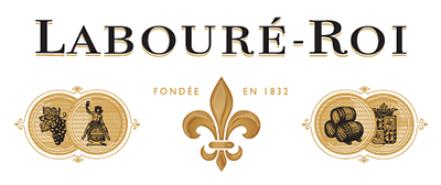Labouré-Roi
Viré-Clessé
Labouré-Roi
Viré-Clessé
Viré-Clessé, first Village appellation made from the outstanding terroirs of the AOC Mâcon-Villages, covers the communes of Viré and Clessé in southern Burgundy, between Tournus and Mâcon.
Wine Production
The grapes are gently pressed to extract the highest quality juice possible. The resulting must is placed in a temperature-controlled vat for settling (12 to 24 hours). This settling operation is crucial in our quest for aromatic purity. The must is then racked and placed in temperature-controlled stainless steel vats (16-18°C) for alcoholic fermentation. Aging in stainless steel vats on the lees (80%) and in oak barrels (20%) for 8 to 10 months.
Tasting Notes
Yellow gold. On the nose, yellow fruit and quince paste with a background of fresh almonds. Refreshing palate with notes of grapefruit and fruit paste. Mineral finish.
Food Pairing
Simply enjoy as an aperitif. It can also be served with terrines and dishes in sauce, such as veal marengo or steamed fish. For cheese, pair with a piece of Comté or goat's cheese.
Viré-Clessé, first Village appellation made from the outstanding terroirs of the AOC Mâcon-Villages, covers the communes of Viré and Clessé in southern Burgundy, between Tournus and Mâcon.
Wine Production
The grapes are gently pressed to extract the highest quality juice possible. The resulting must is placed in a temperature-controlled vat for settling (12 to 24 hours). This settling operation is crucial in our quest for aromatic purity. The must is then racked and placed in temperature-controlled stainless steel vats (16-18°C) for alcoholic fermentation. Aging in stainless steel vats on the lees (80%) and in oak barrels (20%) for 8 to 10 months.
Tasting Notes
Yellow gold. On the nose, yellow fruit and quince paste with a background of fresh almonds. Refreshing palate with notes of grapefruit and fruit paste. Mineral finish.
Food Pairing
Simply enjoy as an aperitif. It can also be served with terrines and dishes in sauce, such as veal marengo or steamed fish. For cheese, pair with a piece of Comté or goat's cheese.
Brand Materials
Vineyard & Production Info
Winemaking & Aging
Analytical Data
About the Vineyard
The cru is made up of two north-south slopes, bounded by the Bourbonne and Mouge valleys. They are made up of Bajocian limestone with entrocitic deposits and Oxfordian (Jurassic) marl-limestone strata. Other soils at the bottom of the slopes are made up of clay with ‘chailles’ (sandstone pebbles), facing east and well drained. The vineyards, on clay-limestone soils, face east and south-east, on steep slopes at an altitude of 200-400 meters.



